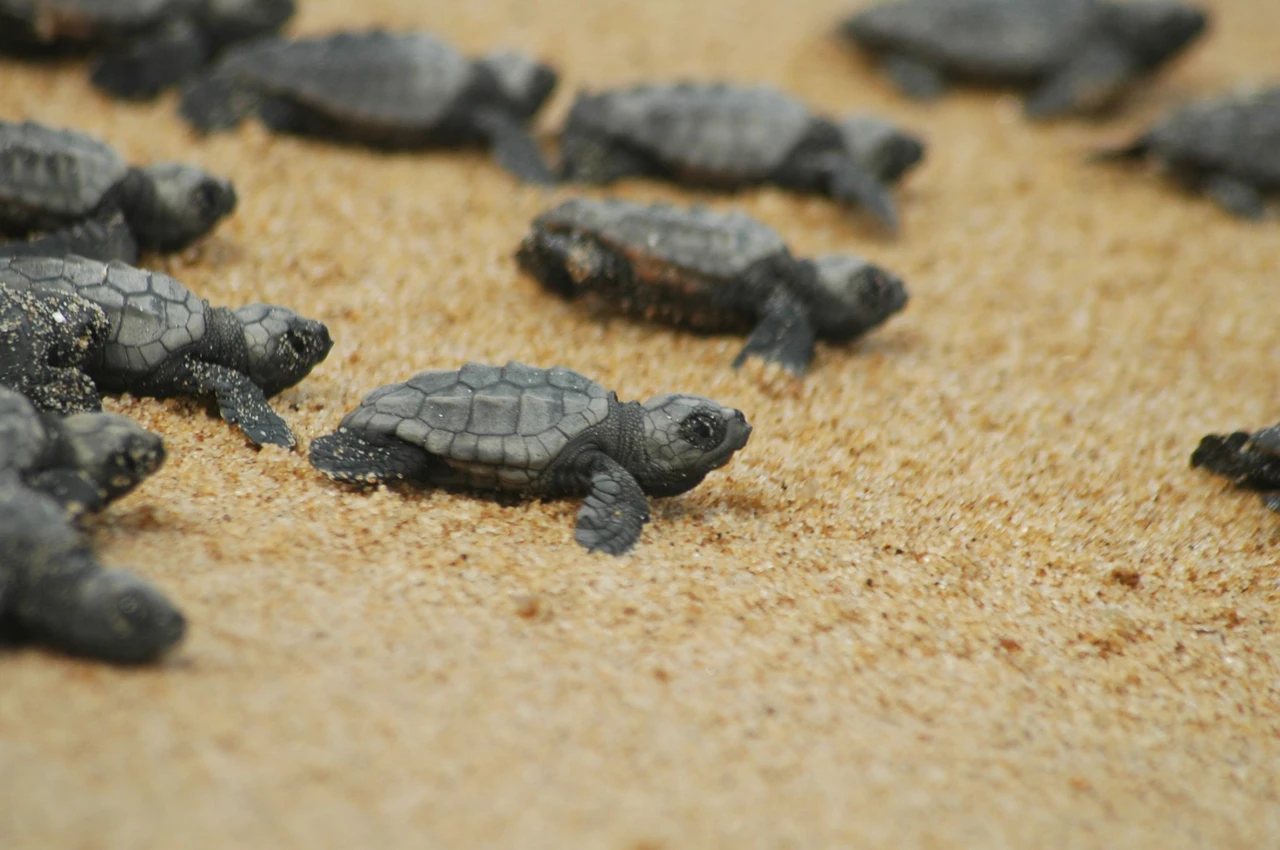Doubling nests, doubling hope: Caretta caretta conservation efforts in Türkiye
 Baby Caretta caretta (loggerhead turtles) making their way across a sandy beach towards the sea.
Baby Caretta caretta (loggerhead turtles) making their way across a sandy beach towards the sea.
In Türkiye, conservation efforts are yielding promising results as the number of Caretta caretta turtle nests has doubled this year. Approximately 60,000 eggs are expected to be laid, with 30,000 baby turtles anticipated to hatch.
Despite this progress, these marine reptiles, listed on the International Union for Conservation of Nature’s red list of threatened species, continue to face significant risks.
Volunteers aid hatchlings on Turkish beaches
On the Mediterranean coast, particularly in Manavgat, volunteers play a crucial role in ensuring the survival of these turtles. They assist hatchlings in reaching the moonlit sea and patrol the beaches at night, protecting nests from potential threats.
Guldene Sahin, who is a dedicated environmentalist, has been volunteering to protect these endangered species for 18 years and has so far identified 287 nests in the 1.9-mile (3.05-kilometer) stretch of the beaches.
“The biggest enemies of carettas are humans. It is very difficult to educate people. Many times we face threats and insults,” says Sahin.
Guldene Sahin and other volunteers play a vital role in ensuring the survival of the endangered Caretta caretta turtles. Their dedicated efforts not only protect these vulnerable creatures but also raise awareness and educate the public about the importance of preserving our natural heritage.
Local authorities support conservation efforts
Manavgat’s local authorities have implemented measures to support these initiatives, including the installation of red streetlights to reduce light pollution that disorients hatchlings. Signs in multiple languages inform the public about the legal repercussions of disturbing nests, emphasizing the collaborative effort between scientists, ecologists, and the community to protect these endangered species.
Climate change and future challenges
While the increase in nests is a positive sign, experts like professor Mehmet Cengiz Deval from Akdeniz University warn about the long-term impacts of climate change. The rising temperatures are causing a disproportionate number of female hatchlings, which could threaten the species’ future reproduction. Conservationists, like Seher Akyol of Dekafok, continue to advocate for comprehensive strategies to address these evolving challenges and ensure the survival of Caretta caretta turtles for generations to come.
Habitats and threats of Caretta caretta
Where does Caretta caretta live, and what threats does it face?
Caretta caretta, commonly known as the loggerhead sea turtle, inhabits temperate waters of the Atlantic, Pacific, and Indian Oceans. They are primarily found nesting along Türkiye’s Mediterranean coast, with significant nesting sites in Adana’s Yumurtalik district, Belek, Anamur, Koycegiz and Dalyan.
These turtles only come ashore to nest, burying their eggs in sandy nests they dig at night.
Hatchlings emerge after a two-month incubation period, guided by moonlight, to reach the sea. The species faces threats from habitat loss, climate change affecting nesting temperatures and human activities.
As one of the oldest living reptiles, loggerheads have survived millions of years, adapting to oceanic life and natural challenges. However, continued conservation efforts are crucial to their survival as they navigate modern threats.



